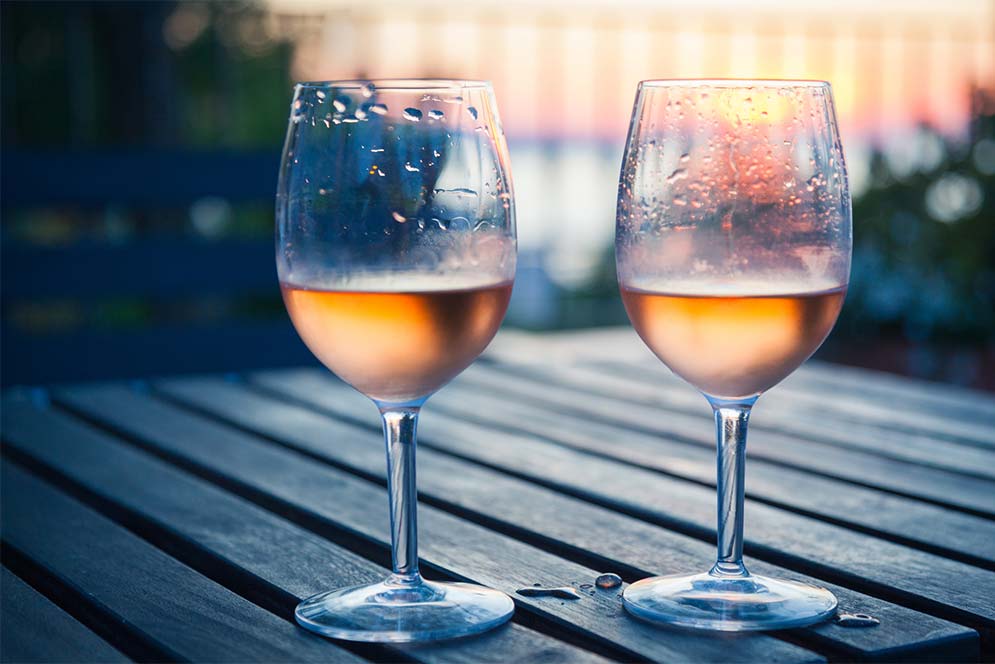Sometimes, what should be an easy mission ends up requiring a complex approach. Fortunately, chilling wine isn’t one of them. Follow a few guidelines, and you’ll sip at the optimal temperature in no time.
Not all wines should be chilled to the same temperature because of their chemical composition. The backbone of a white wine is acidity. The structure of a red comes from its tannins. Dessert wines have different amounts of residual sugar. Sparkling holds carbon dioxide (CO2). All have varying degrees of alcohol. Thus, temperature can mute or accentuate a wine, based on its components.
Let’s start with optimal temperature ranges.

Red and Fortified Wine: While times they are a-changin’ common wisdom was once to serve reds at room temperature. But what does that mean? A humid studio at noon in August? No, thank you. Unless you live in a European castle where your boudoir remains chilly year-round, the room temp axiom is outdated.
Red wine should be in the range of 55°F–65°F. Lighter-bodied wines with higher acidity, like Loire Valley Cabernet Franc, prefer lower temps. Place it in the refrigerator for 90 minutes. Fuller-bodied, tannic wines like Bordeaux and Napa Cabernet Sauvignon taste better warmer, so keep them to 45 minutes in the fridge. Red wine that’s too cold tastes dull, but when too warm, it’s flabby and alcoholic. Like Goldilocks, somewhere in between is just right.
Fortified wines like Port and Madeira should be 60°F–65°F.

White, Rosé and Sparkling Wine: Whites need a chill to lift delicate aromas and acidity. However, when they’re too cold, flavors become muted. Like reds, fuller-bodied wines like Chardonnay from Burgundy and California shine between 50°F and 60°F. Dessert wines like Sauternes fall into the same range.
Lighter, fruitier wines work best colder, between 45°F and 50°F, or two hours in the fridge. Most Italian whites like Pinot Grigio and Sauvignon Blanc also fall in that range. Wine should rarely be colder than 45°F, unless they’re porch pounders on a hot day.
Sparklers, however, need to be between 40°F and 50°F, as CO2 stays trapped better in colder liquids. Vintage and prestige cuvée Champagnes can be served at the top end, due to complexity and weight. Prosecco, or similarly light-bodied fruity sparklers work better at the bottom end.

How to Chill Wine
Advance Planning. This rule applies to most everything in life. Stick reds and whites in the fridge and remove them an hour or two before dinner. The ideal temperature for a fridge is between 35°F and 40°F. If you’ve got cold spots that always freeze your lettuce, at least they’ll chill your wine a bit faster. Chilling bottles in the door won’t make a difference as far as time, but if you open it frequently, stick bottles further back on a shelf or in the crisper bins.
The Freezer. We’ve all done it. Loaded bottles into the icemaker as friends grew ambitious with their consumption, only to forget them and find an icy explosion the next morning. While quality may not diminish at such extreme temperatures, the risk of a mess rises. When the water in wine freezes, it expands and can push the cork out in part or full, or even crack the bottle. This allows the egress of oxygen, which starts the clock on oxidation. If you use the freezer, set a timer for 30 minutes.



